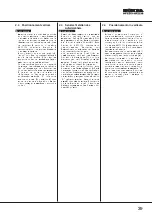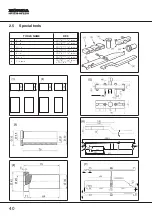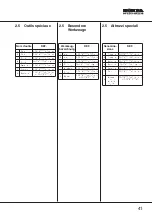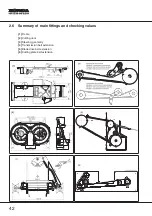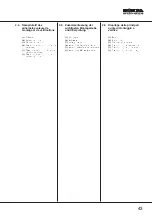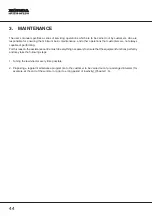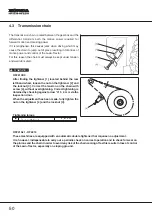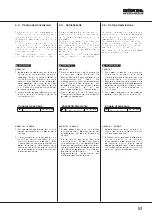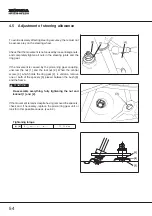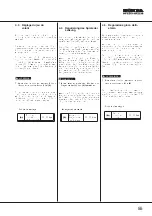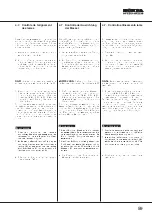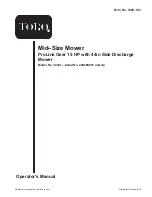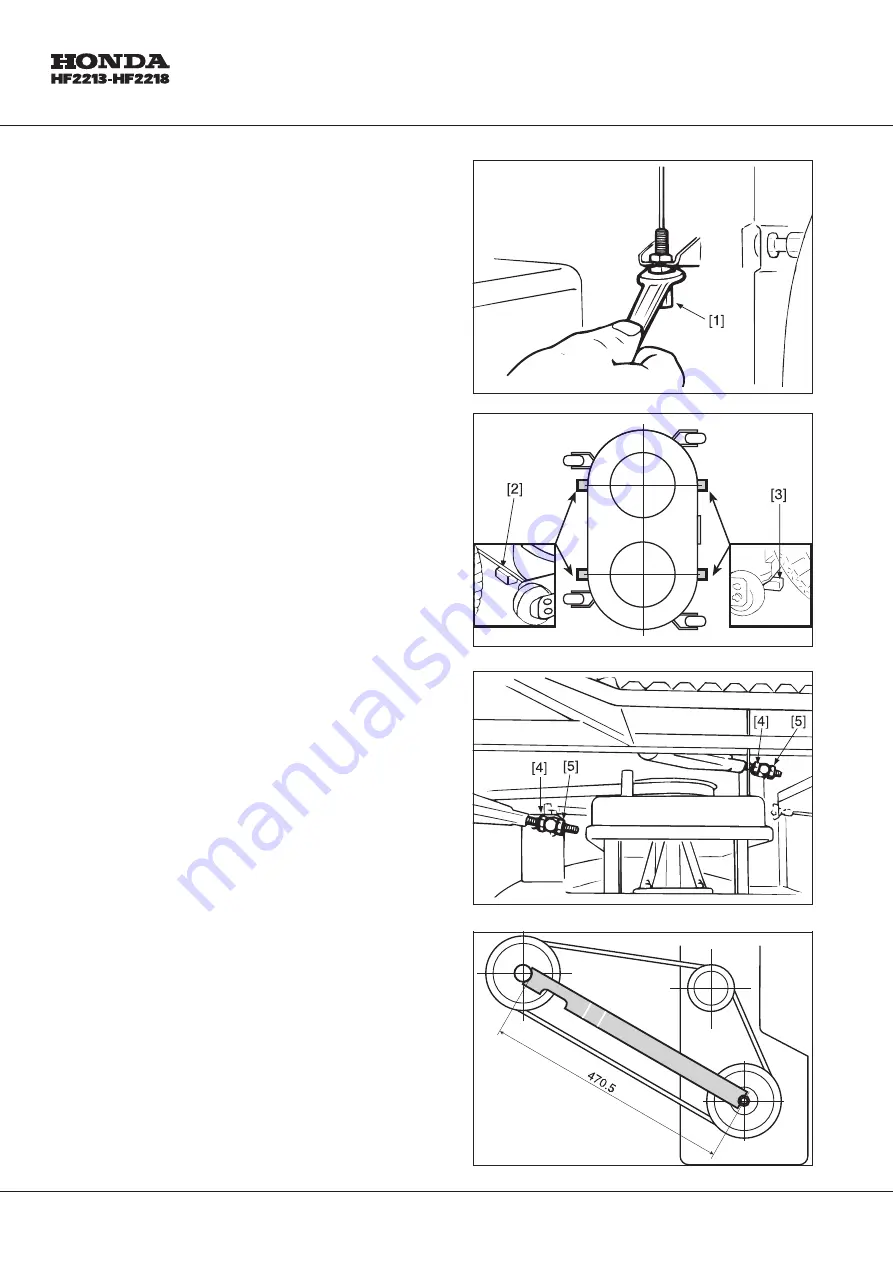
4.4
Making the cutter deck parallel
Raising the cutting plate is controlled by two lever-operated
cables and guided by four hinge rods.
If the deck does not come down parallel to the ground, an
irregular cut will result, the grass taking on a «stepped» effect.
If the deck and the levers seem to be in good condition and
not showing signs of damage, then the problem is due to a
difference in tyre pressures or the stretching of the cables.
These are adjusted as in point [a], or in the opposite case there
will have to be a complete adjustment as in point [b].
Check the tyre pressures. If one or more tyres have been
replaced and differences in diameters are found, do not
attempt to compensate for this difference by giving differing
tyre pressures but vary the length of the right and left-hand
ropes by altering their respective adjuster [1].
a.
Primary adjustment
1. Place the Lawn-Tractor on a flat, firm and even surface.
Operate the adjusting devices on both sides [1] until a
uniform ground clearance is obtained with the operator in
the seated position.
2. Without the driver, the rear part of the cutting deck should
be 3 mm higher than the front.
3. This operation should be repeated with the deck positioned
at two or three different cutting heights.
b. Complete adjustment
1. Put the lawn-tractor on a level, firm and flat surface (on a
work-bench for example). Put some blocks beneath the
cutting deck corresponding to the centre of the blades:
- front 25 mm [2] (Tool n° CG60700000H0)
- rear 28 mm [3] (Tool n° CG60700001H0)
2. Set the cutting height adjustment lever to position “1” and
fully loosen the two adjusting devices [1] and the nuts [4]
and locknuts [5] on the four hinge rods until the plate is
resting on the blocks.
3. Adjust the nuts of the rear left trace rod until the exact
distance of 470.5 mm. between the outside of the engine
pulley hub and the centre of the shaft of the left blade is
reached. To make this easier, use a checking gauge [6]
(Tool n° CG60205000H0).
4. Turn the nuts of the rear right trace rod until the exit mouth
is in line with the conveyor, then fully tighten the nuts and
locknuts of the rear trace rods.
5. Use the adjusting devices [1] as specified in section [a].
6. Check that the deck descends properly and is parallel with
the ground, putting it at varying heights with the driver in
position and then re-regulate the front trace rods for any
further adjustment.
When the driver is not in position, the rear part of the cutting
deck should be at least 3 mm. higher than the front.
7. Check the adjustment of the blade engagement (see
4.1).
52


